The SNIA Solid State Storage Initiative would like to thank everyone who attended our webcast: How To Be Part of the Real World Workload Revolution. If you haven’t seen it yet, you can view the on demand version here. You can find the slides here.
Eden Kim and Jim Fister led a discussion on the testmyworkload (TMW) tool and data repository, discussing how a collection of real-world workload data captures can revolutionize design and configuration of hardware, software and systems for the industry. A new SNIA white paper available in both English and Chinese authored by Eden Kim, with an introduction by Tom Coughlin of Coughlin Associates and Jim Handy of Objective Analysis, discusses how we can all benefit by sharing traces of our digital workloads through the SNIA SSSI Real-World Workload Capture program.
In an environment where workloads are becoming more complex — and the choices of hardware configuration for solid-state storage are growing — the opportunity to better understand the characteristics of data transfers to and from the storage systems is critical. By sharing real-world workloads on the Test My Workload repository, the industry can benefit overall in design and development at every level from SSD development to system configuration in the datacenter.
There were several questions asked in and after the webcast. Here are some of the answers. Any additional questions can be addressed to asksssi@snia.org.
Q: Shouldn’t real world workloads have concurrent applications? Also, wouldn’t any SQL workloads also log or journal sequential writes?
A: Yes. Each capture shows all of the IO Streams that are being applied to each logical storage recognized by the OS. These IO Streams are comprised of IOs generated by System activities as well as a variety of drivers, applications and OS activities. The IOProfiler toolset allows you to not only see all of the IO Stream activity that occurs during a capture, but also allows you to parse, or filter, the capture to see just the IO Streams (and other metrics) that are of interest.
Q: Is there any collaboration with the SNIA IOTTA Technical Work Group on workload or trace uploading?
A: While IOTTA TWG and SSS TWG work closely together, an IO Capture is fundamentally different from an IO Trace and hence is not able to be presented on the IOTTA trace repository. An IO Trace collects all of the data streams that occur during the IO Trace capture period and results in a very large file. An IO Capture, on the other hand, captures statistics on the observed IO Streams and saves these statistics to a table. Hence, no actual personal or user data is captured in an IO Capture, only the statistics on the IO Streams. Because IO Captures are a series of record tables for individual time steps, the format is not compatible with a repository for the streaming data captured in an IO Trace.
For example, an IO Trace could do a capture where 50,000 RND 4K Write and 50,000 RND 4K Read IOPS are recorded, resulting in 100,000 4K transfers, or 40M bytes of data. OTOH, an IO Capture that collects statistics would log the fact that 50,000 RND 4K Writes and 50,000 RND 4K Reads occurred… a simple two item entry in a table. Of course, the IOPS, Response Times, Queue Depths and LBA Ranges could also be tracked resulting in a table of 100,000 entries times the above 4 metrics, but 400,000 table entries is much smaller than 40 MB of data.
Both of these activities are useful, and the SNIA supports both.
Q: Can the traces capture a cluster workload or just single server?
A: IO Captures capture the IO Streams that are observed going from User space to all logical storage recognized by the OS. Accordingly, for clusters, there will be an individual capture for each logical unit. Note that all logical device captures can be aggregated into a single capture for analysis with the advanced analytics offered by the commercial IOProfiler tools.
Q: Have you seen situation where the IO size on the wire does not matched what application request? Example Application request 256K but driver chopped the IO into multiple 16K before sent to the storage. How would we verify this type of issue?
A: Yes, this is a common situation. Applications may generate a large block SEQ IO Stream for video on demand. However, that large block SEQ IO Stream is often fragmented into concurrent RND block sizes. For example, in Linux OS, a 1MB file is often fragmented into random concurrent 128K block sizes for transmission to and from storage, but then coalesced back into a single 1024K BS in user space..
Q: Will you be sharing the costs for your tools or systems?
A: The tool demonstrated in the webcast is available free at testmyworkload.com (TMW). This is done to build the repository of workloads at the TMW site. Calypso Systems does have a set of Pro tools built around the TMW application. Contact Calypso for specific details.
Q: Can the capture be replayed on different drives?
A: Yes. In fact, this is one of the reasons that the tool was created. The tool and repository of workloads are intended to be used as a way to compare drive and system performance, as well as tune software for real-world conditions.
Q: How are you tracking compressibility & duplication if the user does not turn on compression or dedupe?
A: The user must turn on compression or duplication at the beginning of the capture to see these metrics.
Q: An end user can readily use this to see what their real world workload looks like. But, how could an SSD vendor mimic the real world workload or get a more “realworld-like” workload for use in common benchmarking tools like FIO & Sysbench?
A: The benchmarking tools mentioned are synthetic workloads, and write a predictable stream to and from the drive. IO Captures ideally are run as a replay test that recreates the sequence of changing IO Stream combinations and Queue Depths observed during the capture. While the Calypso toolset can do this automatically, free benchmark tools like FIO and sysbench may not be able to change QDs and IO Stream combinations from step to step in a test script. However, the IO Capture will also provide a cumulative workload that list the dominant IO Streams and their percentage of occurrence. This list of dominant IO Streams can be used with fio or sysbench to create a synthetic composite IO stream workload.
Q: Is it possible to use the tool to track CPU State such as IOWAIT or AWAIT based on the various streams?
A: Yes, IO Captures contain statistics on CPU usage such as CPU System Usage %, CPU IO Wait, CPU User usage, etc.
Q: Can we get more explanation of demand intensity and comparison to queue depth?
A: Demand Intensity (DI) is used to refer to the outstanding IOs at a given level of the software/hardware stack. It may be referred to simply as the outstanding Queue Depth (QD) or as the number of outstanding Thread Count (TC) and QD. The relevance of TC depends on where in the stack you are measuring the DI. User QD varies from level to level and depends on what each layer of abstraction is doing. Usually, focus is paid to the IO Scheduler and the total outstanding IOs at the block IO level. Regardless of nomenclature, it is important to understand the DI as your workload traverses the IO Stack and to be able to minimize bottlenecks due to high DI.
Q: In these RWSW application traces do these include non-media command percentages such as identify and read log page (SMART), sleep states, etc.? Depending on the storage interface and firmware this can adversely affect performance/QoS.
A: IO Capture metrics are the IO Streams at the logical storage level and thus do not include protocol level commands. Non performance IO commands such as TRIMs can be recorded, and SMART logs can be tracked if access to the physical storage is provided.
Q: Isn’t latency a key performance metric for these workloads so collecting only 2 minute burst might not show latency anomalies?
A: IO Captures average the statistics over a selected time window. Each individual IO Stream and its metrics are recorded and tabulated on a table but the time window average is what is displayed on the IO Stream map. Of course, the min and max Response times over the 2 minute window are displayed, but the individual IO latencies are not displayed. In order to track IO Bursts, the time window resolution should be set to a narrow time range, such as 100 mS or less, in order to distinguish IO Bursts and Host Idle times.
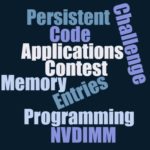 AgigA Tech, Intel, SMART Modular, and Supermicro, members of the SNIA Persistent Memory and NVDIMM SIG, have now placed persistent memory systems with NVDIMM-Ns into the SNIA Technology Center as the backbone of the first SNIA NVDIMM Programming Challenge.
AgigA Tech, Intel, SMART Modular, and Supermicro, members of the SNIA Persistent Memory and NVDIMM SIG, have now placed persistent memory systems with NVDIMM-Ns into the SNIA Technology Center as the backbone of the first SNIA NVDIMM Programming Challenge.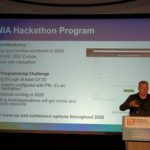 of the judging criteria described below, as determined by the panel, will be eligible for a demonstration slot to show the 400+ attendees at the January 23, 2020 Persistent Memory Summit in Santa Clara CA.
of the judging criteria described below, as determined by the panel, will be eligible for a demonstration slot to show the 400+ attendees at the January 23, 2020 Persistent Memory Summit in Santa Clara CA.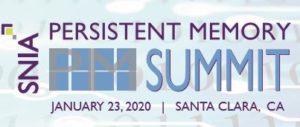
 SNIA volunteers were again recognized for their hard work developing standards for datacenters and storage professionals with a “Most Innovative Flash Memory Technology” FMS Best of Show award. This year, it was SNIA’s Object Drive Technical Work Group who received kudos for the SNIA Technical Position Key Value Storage API Specification. Jay Kramer, head of the FMS awards program, presented the award to Bill Martin, Chair of the Object Drive TWG, commenting “Key value store technology can enable NVM storage devices to map and store data more efficiently and with enhanced performance, which is of paramount significance to facilitate computational storage. Flash Memory Summit is proud to recognize the SNIA Object Drive Technical Work Group (TWG) for creating the SNIA Technical Position Key Value Storage API Specification Version 1.0 defining an application programming interface (API) for key value storage devices and making this available to the public for
SNIA volunteers were again recognized for their hard work developing standards for datacenters and storage professionals with a “Most Innovative Flash Memory Technology” FMS Best of Show award. This year, it was SNIA’s Object Drive Technical Work Group who received kudos for the SNIA Technical Position Key Value Storage API Specification. Jay Kramer, head of the FMS awards program, presented the award to Bill Martin, Chair of the Object Drive TWG, commenting “Key value store technology can enable NVM storage devices to map and store data more efficiently and with enhanced performance, which is of paramount significance to facilitate computational storage. Flash Memory Summit is proud to recognize the SNIA Object Drive Technical Work Group (TWG) for creating the SNIA Technical Position Key Value Storage API Specification Version 1.0 defining an application programming interface (API) for key value storage devices and making this available to the public for 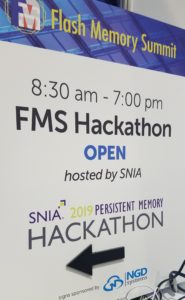
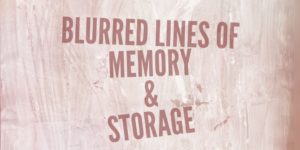 The lines are blurring as new memory technologies are challenging the way we build and use storage to meet application demands. That’s why the
The lines are blurring as new memory technologies are challenging the way we build and use storage to meet application demands. That’s why the 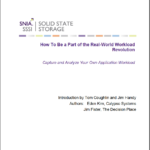 In an environment where workloads are becoming more complex — and the choices of hardware configuration for solid-state storage are growing — the opportunity to better understand the characteristics of data transfers to and from the storage systems is critical. By sharing real-world workloads on the Test My Workload repository, the industry can benefit overall in design and development at every level from SSD development to system configuration in the datacenter.
There were several questions asked in and after the webcast. Here are some of the answers.
In an environment where workloads are becoming more complex — and the choices of hardware configuration for solid-state storage are growing — the opportunity to better understand the characteristics of data transfers to and from the storage systems is critical. By sharing real-world workloads on the Test My Workload repository, the industry can benefit overall in design and development at every level from SSD development to system configuration in the datacenter.
There were several questions asked in and after the webcast. Here are some of the answers. 


